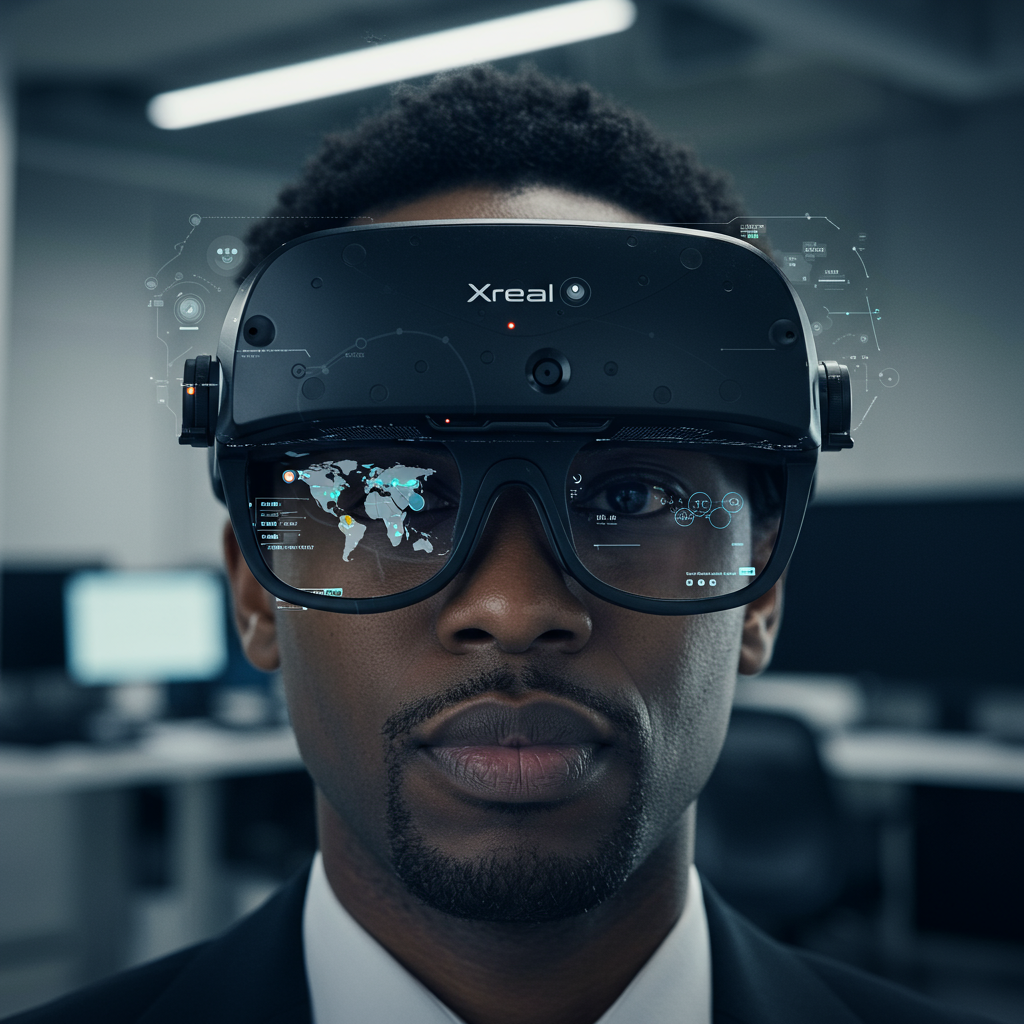Augmented reality (AR) promises a future where digital information blends seamlessly with our physical world, potentially changing how we interact with technology. Xreal Inc.’s new One Pro AR smart glasses offer a tangible taste of this potential future, providing a glimpse of experiences we might eventually see from tech giants like Meta Platforms Inc., Apple Inc., and Alphabet Inc.’s Google.
From a distance, the Xreal One Pro glasses are remarkably discreet, resembling conventional spectacles. They are designed to be comfortable and wearable for extended periods. However, the Xreal One Pro doesn’t yet represent the ultimate vision of standalone AR glasses – devices that fully supplant a smartphone while blending digital content into the real world independently. Instead, the One Pro excels brilliantly at a specific, highly practical function: serving as a high-definition virtual external display.
Your Portable Big Screen
Plug the Xreal One Pro into your smartphone, laptop, gaming console, or other compatible devices, and it transforms into a expansive, private monitor projected before your eyes. This is where the glasses truly shine. They provide a versatile and portable screen solution, whether you need extra display space for work, want to watch movies on a large virtual screen during a commute, or desire an immersive gaming experience anywhere. The clarity and size of this virtual display are key strengths highlighted in recent reviews, positioning the One Pro as an excellent alternative or addition to traditional monitors and device screens.
A Step Towards the Future
While the Xreal One Pro masters the virtual display, the broader future of consumer augmented reality glasses is rapidly evolving. Companies are actively developing devices intended to be more independent and feature-rich, moving beyond just serving as displays.
For instance, Snap Inc. is reportedly accelerating its push into consumer AR with plans to launch its “Specs” glasses in 2026, potentially arriving before Meta’s anticipated Artemis project targeted for 2027. These forthcoming glasses from competitors aim to offer functionalities that go beyond what’s possible with a smartphone today. Expected features in future consumer AR glasses, exemplified by Snap’s plans, include integrated artificial intelligence assistants, support for multiplayer gaming experiences overlaid onto the real world, and dedicated “workstation” areas for productivity tasks like web browsing and video streaming. Such devices are being designed to integrate with external AI models and support advanced AR experiences, like sophisticated Lenses that enable interactive games or provide real-time assistance for physical tasks.
Compared to this ambitious future, the Xreal One Pro, with its focus primarily on being an external display, serves as an important, highly capable step along the path. It demonstrates the potential for wearable displays and introduces users to the concept of AR in a practical, accessible way, even if it doesn’t yet deliver the full promise of standalone, world-altering augmented reality.
In conclusion, the Xreal One Pro AR glasses are a compelling device today, particularly for users seeking a portable, high-quality virtual display. While they may be seen as a “stopgap” by some ahead of the arrival of more autonomous and feature-rich AR glasses from companies like Snap, Meta, and Apple, their current capability as an external monitor makes them a valuable piece of consumer technology in the present AR landscape. They offer a concrete, useful application of augmented reality technology while the true, standalone AR future is still taking shape.




